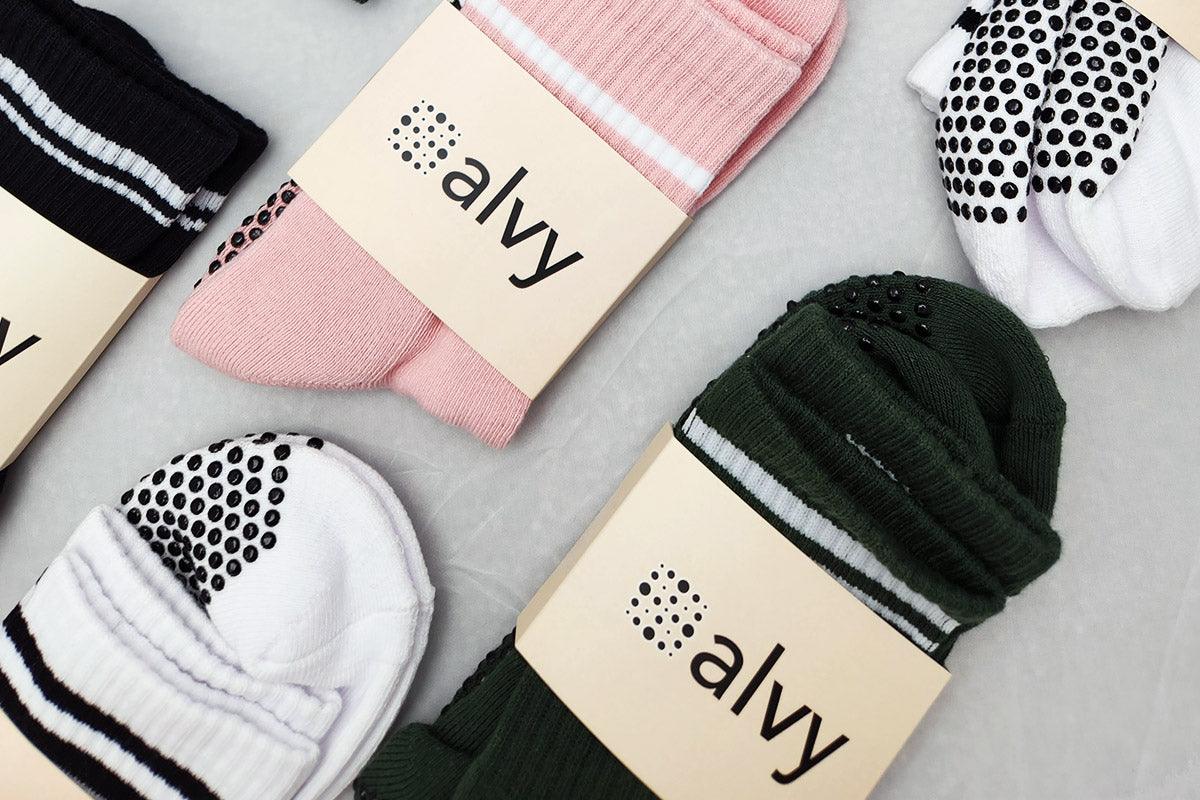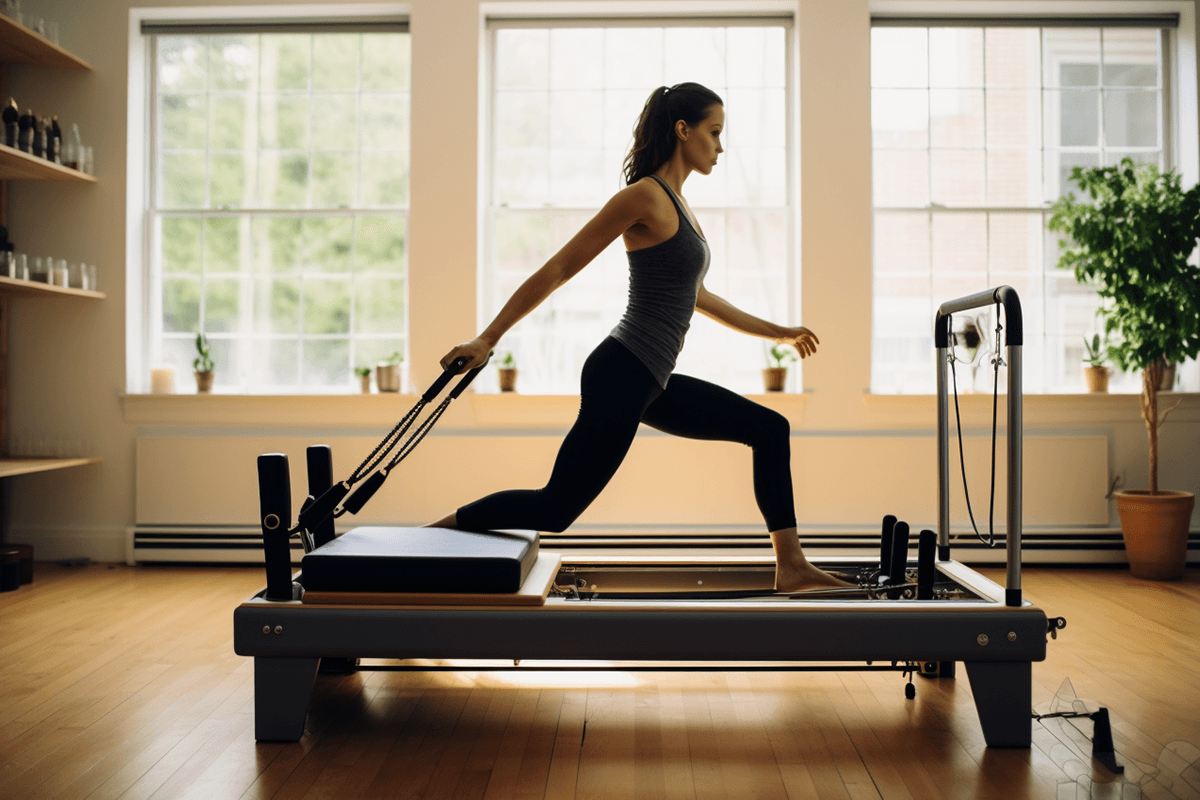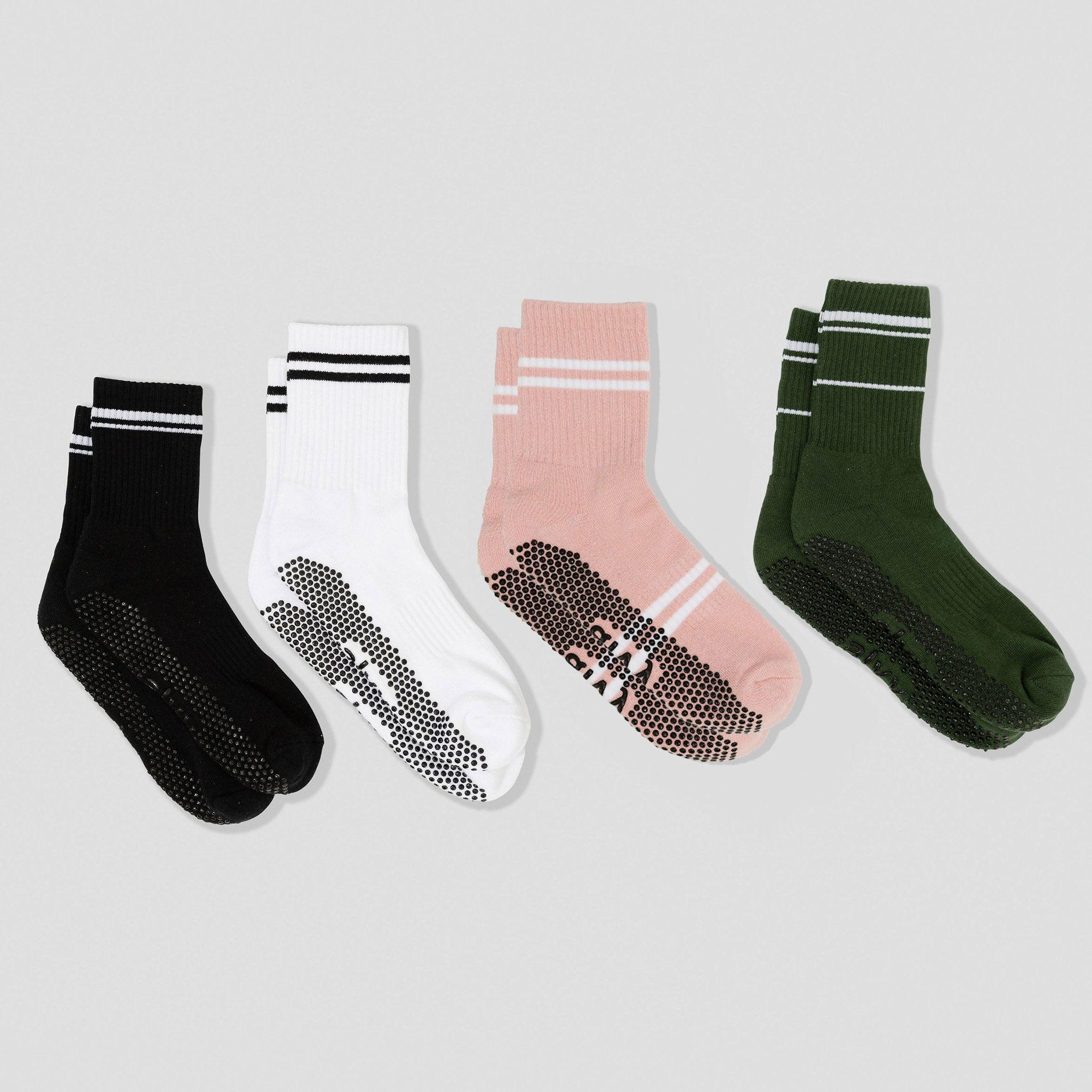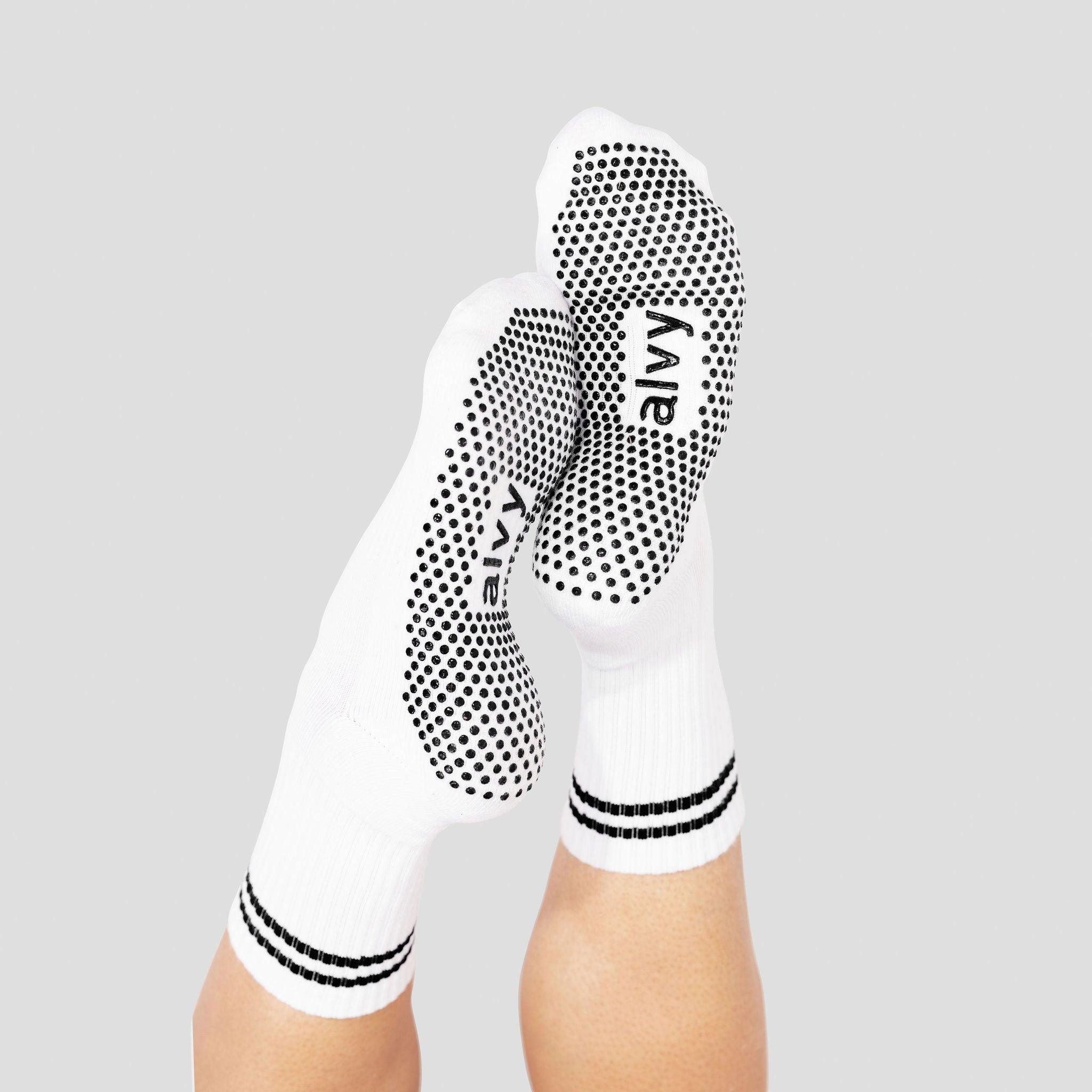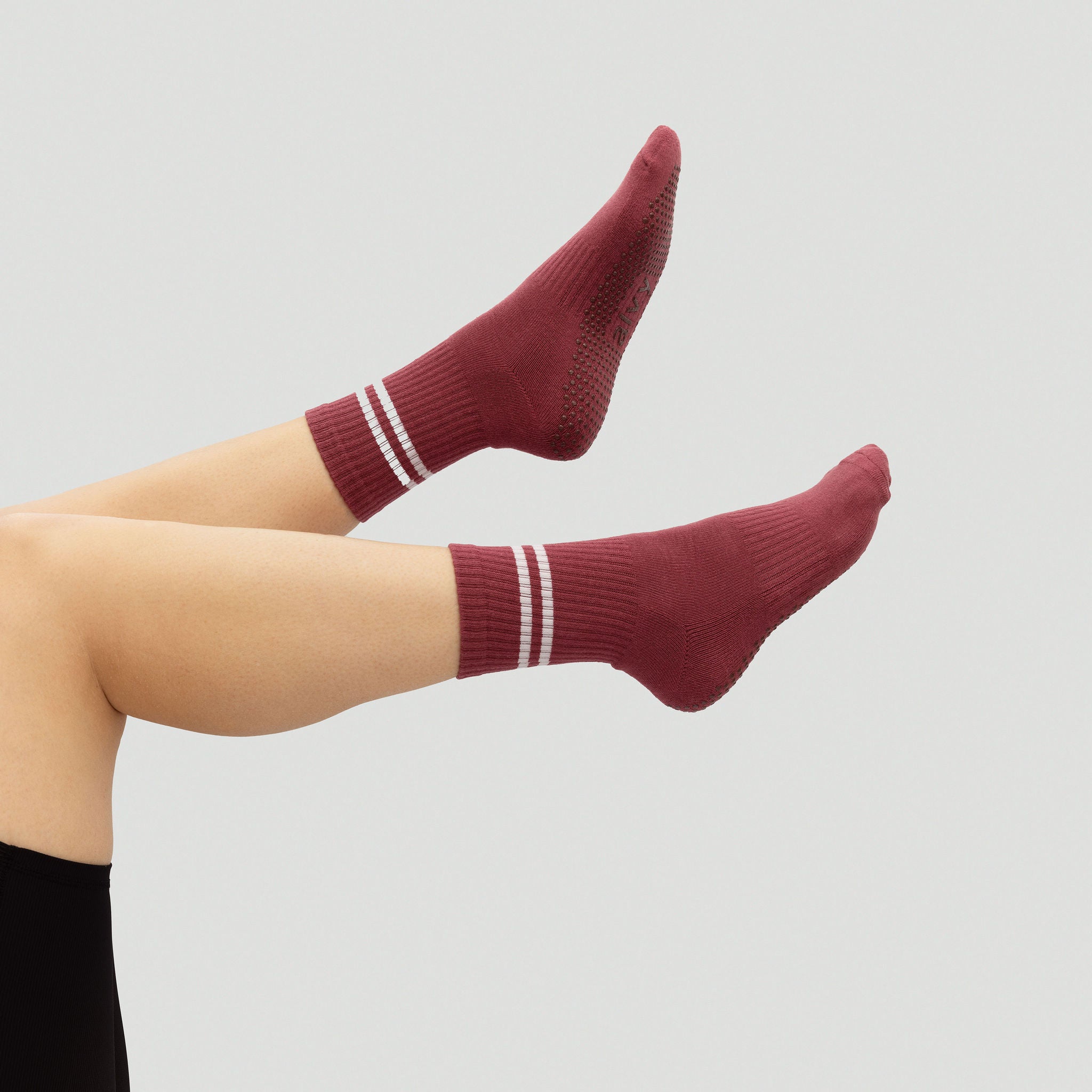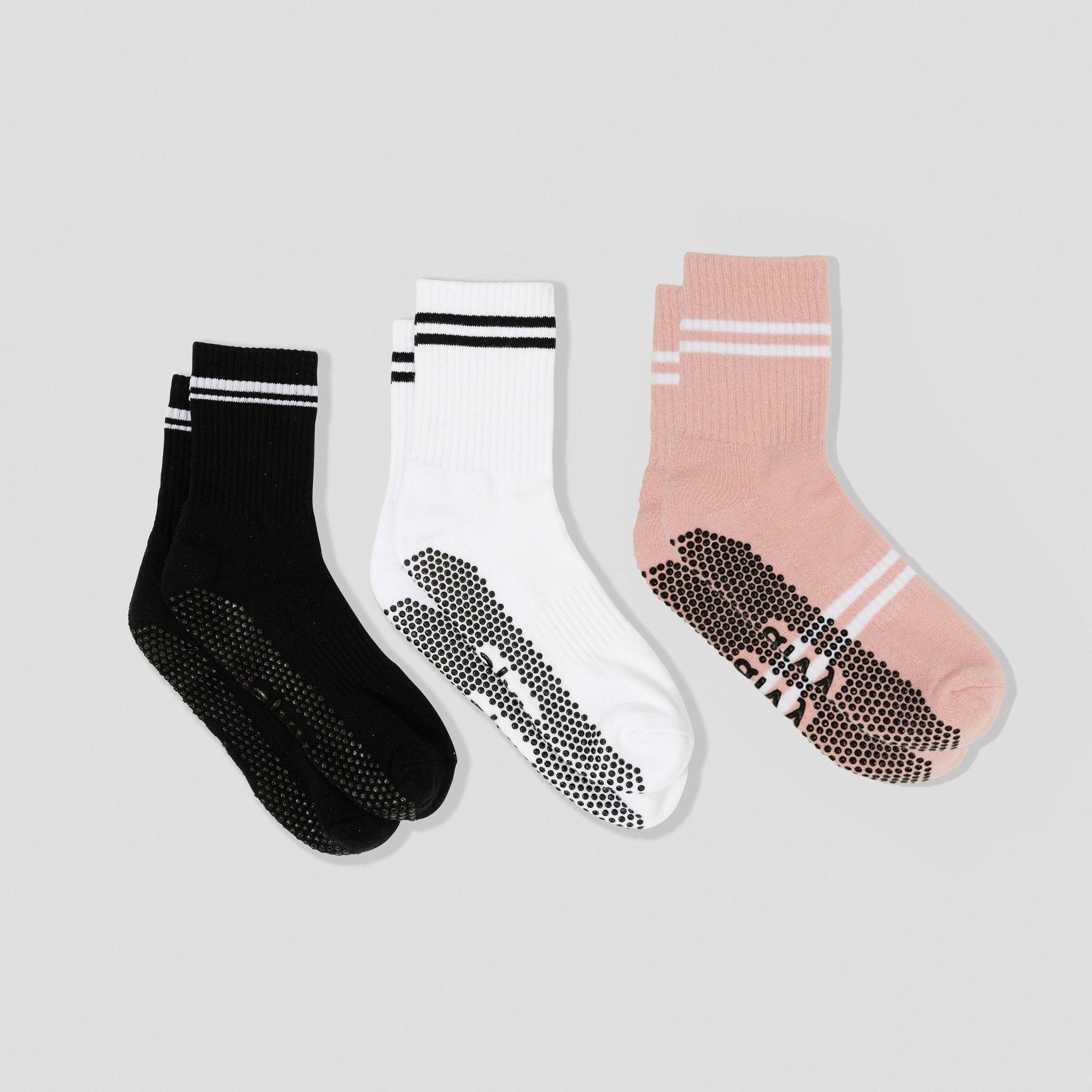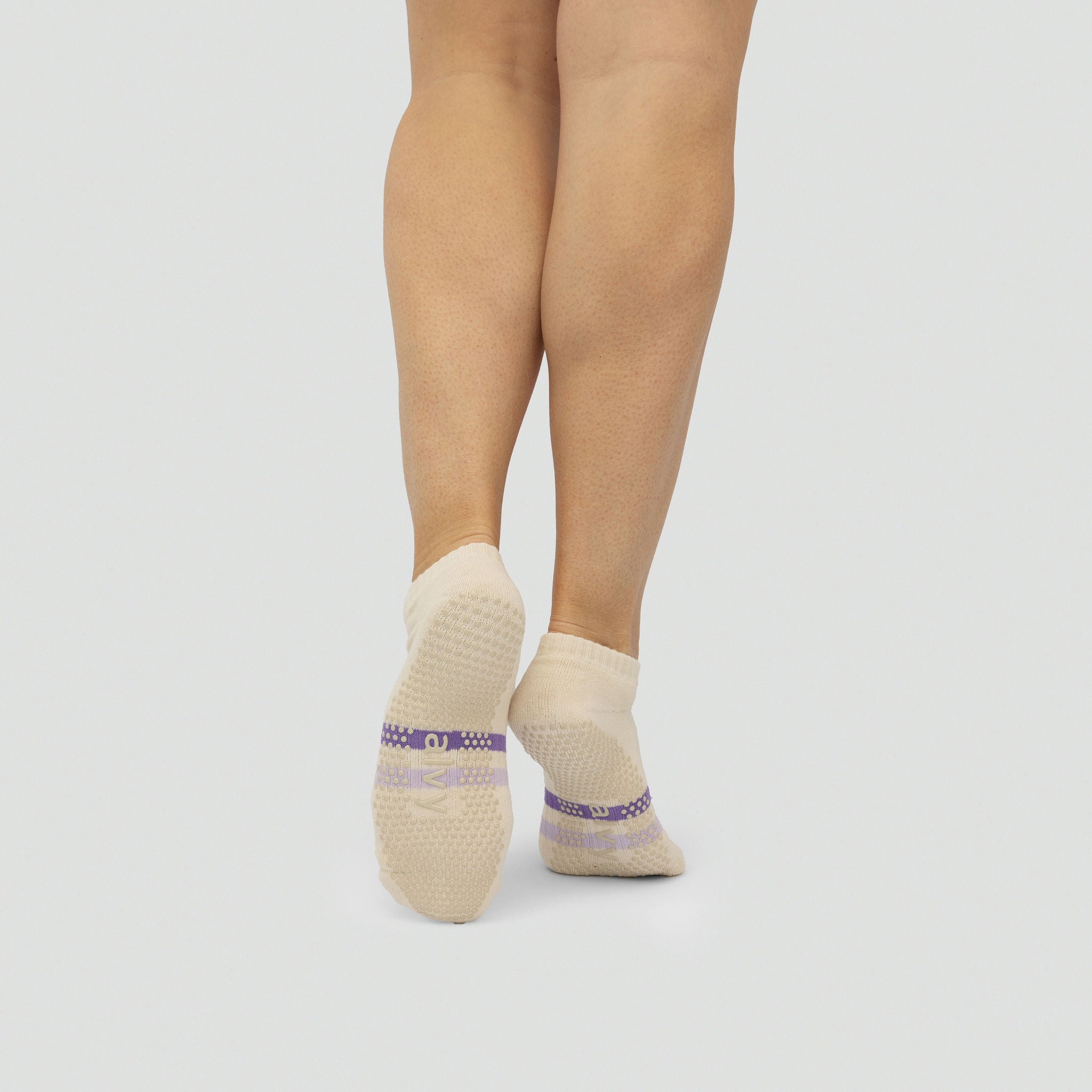Non-slip grip socks such as the ALVY Crew and low-rise ranges are designed to provide extra traction on slippery surfaces, which makes them ideal for activities that require stability, such as Pilates, yoga, and barre. But what about wearing them outside of the studio? Are grip socks useful for other activities?
Key takeaways:
- Grip socks are primarily designed for indoor activities such as Pilates, yoga, and barre that take place on smooth floors, but can be useful for outdoor sports such as AFL, soccer and cricket.
- When considering wearing grip socks outside of the Pilates studio, it's important to take into account the terrain, weather conditions, and safety concerns.
- Alternatives to grip socks for outdoor activities include athletic shoes, hiking boots, and other types of footwear that provide traction and support.
Are Grip Socks Useful Outside of Pilates and Yoga?
The answer is yes, grip socks can be useful outside of Pilates and yoga. For example, if you like to go for walks or hikes, grip socks can provide extra grip and prevent slips on uneven terrain. They can also be useful for indoor rock climbing, where grip is essential to avoid falls. Grip socks are increasingly popular for popular Australian outdoor sports including AFL, cricket, and rugby.
In addition, grip socks can be worn for everyday activities, such as running errands or doing household chores. They can help prevent slips on hardwood or tile floors, which can be especially useful for seniors or those with mobility issues. However, it's important to note that not all grip socks are created equal, and cheap grip socks have flooded the market on marketplaces such as Amazon, Temu, and Alibaba. This means some grip socks may not be suitable for outdoor activities or may not provide enough grip for certain activities.
Can You Wear Grip Socks For Home Exercises?
If you are looking for an easy way to increase stability and reduce the risk of slipping during your home workout, grip socks can be a great addition to your gear. The silicon or PVC material grips on the bottom to provide extra traction on slippery surfaces such as tiles, polished concrete, and wooden floors. This makes them ideal for home workouts including bodyweight exercises, stretching, and even weightlifting as the extra grip can help you maintain proper form and prevent your feet from sliding on the floor.
Where Else Can You Use Grip Socks?
Non-slip grip socks are not just limited to the studio or gym. They can be used in many other places and situations where you need extra traction and stability. Here are some examples:
1. At Home
Do you have hardwood or tile floors at home? If so, you know how slippery they can be, especially when you're wearing socks. As mentioned above, they can help you avoid slips and falls while walking around your home, especially with tiled floors which can be slippery with normal socks. They can also be useful when doing household chores like cleaning or cooking, where you need to move around quickly and safely.
2. Outdoors
Grip socks can also be used outdoors, especially when you're doing activities like hiking or rock climbing. They can provide extra grip and traction on uneven surfaces, helping you avoid slips and falls. You can also use them when doing outdoor yoga or Pilates, as they can help you maintain your balance on grass or sand.
3. Hospitals
If you're visiting someone in the hospital or staying there yourself, you might want to consider wearing grip socks. Hospitals can be slippery places, especially in the bathroom or around the bed. Grip socks can help you avoid slips and falls, while also keeping your feet warm and clean.
Considerations for Outdoor Use
If you're considering wearing grip socks outside your Pilates class, there are a few things to keep in mind to ensure your safety and the longevity of your socks.
Surface Compatibility
Before wearing grip socks outside, consider the surface you'll be walking on. Grip socks are designed to provide traction on smooth surfaces such as studio floors, but may not be suitable for outdoor surfaces such as concrete or asphalt. These surfaces can wear down the grip on the socks faster and may even cause the grip to peel off entirely, making them less effective in the studio. If you plan on wearing grip socks outside, it's best to stick to smooth surfaces such as wooden decks or indoor/outdoor carpeting.
Durability Concerns
Grip socks are typically made of a combination of cotton, polyester, and spandex, which can make them susceptible to wear and tear. If you plan on wearing grip socks outside, be aware that they may not last as long as they would in the studio. However, some grip socks are designed specifically for outdoor use, which may be more durable than standard grip socks. For example, the ALVY range of grip socks has reinforced soles or extra padding to help extend their lifespan.
Hygiene and Maintenance
Wearing grip socks outside can also increase the risk of dirt and debris getting stuck in the grip on the bottom of the socks. This can make them less effective in the studio and may even cause them to become slippery. To keep your grip socks clean and hygienic, wash them regularly according to the manufacturer's instructions. If you plan on wearing them outside, consider bringing a clean pair of socks to change into once you're back in the studio to avoid tracking dirt and debris onto the studio floor.
Alternatives to Grip Socks for Outdoor Activities
Here are some alternatives to grip socks that you can consider for outdoor activities.
Outdoor Performance Socks
Outdoor performance socks are designed for activities such as hiking, trail running, and other outdoor sports. They are made with materials that provide extra cushioning, support, and moisture-wicking properties. They also have features such as arch support, reinforced heels and toes, and seamless construction to prevent blisters and chafing.
Some popular brands of outdoor performance socks include Darn Tough, Smartwool, and Injinji. These socks are available in different styles and thicknesses to suit different activities and weather conditions. They are also available in different sizes and colours to match your preferences.
Appropriate Footwear Choices
Another alternative to grip socks for outdoor activities is to choose appropriate footwear. For example, for hiking and trail running, you may want to wear shoes or boots with aggressive treads and good grip. Look for shoes that are designed for the specific terrain and weather conditions you will be encountering.
For other outdoor activities such as cycling, rock climbing, or water sports, you may want to wear shoes or sandals that are specifically designed for these activities. These shoes often have features such as sticky rubber soles, quick-drying materials, and adjustable straps for a secure fit.
Frequently Asked Questions
Are grip socks suitable for outdoor activities or should they be kept for studio use?
Grip socks are primarily designed for indoor use, particularly in fitness studios, yoga classes, and Pilates sessions. However, some people may choose to wear them outside of the studio for various reasons. While it is possible to wear grip socks outside, it is important to note that they may not be suitable for all outdoor activities.
What are the potential drawbacks of using grip socks in outdoor environments?
One of the main drawbacks of wearing grip socks outside is that they may not provide the same level of grip and stability as regular shoes. This could increase the risk of slipping and falling, especially on wet or uneven surfaces. Additionally, grip socks may not offer adequate protection from sharp objects or rough terrain, which could result in injury or damage to the socks.
Is it common for professionals to utilise grip socks in their outdoor training routines?
While grip socks are primarily designed for indoor use, some professionals may choose to wear them for certain outdoor activities. For example, athletes may use grip socks for training exercises that require a greater degree of foot flexibility and control, such as balance drills or agility training. However, it is important to note that this is not a common practice, and most professionals would opt for regular shoes for outdoor training.
Can grip socks be effectively worn with shoes, or are they intended for barefoot use?
Grip socks are primarily designed for barefoot use, as the grips on the soles are intended to provide traction and stability on smooth surfaces. While it is possible to wear grip socks with shoes, it may not be as effective, as the grips may not align with the treads on the shoes. Additionally, wearing grip socks with shoes could cause the socks to wear out more quickly, as the friction between the socks and the shoes could damage the grips.


